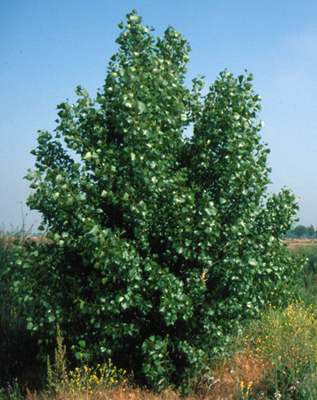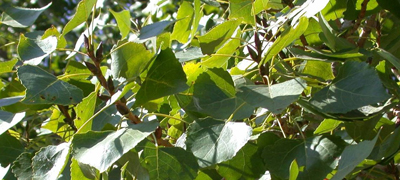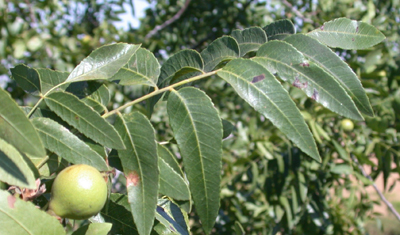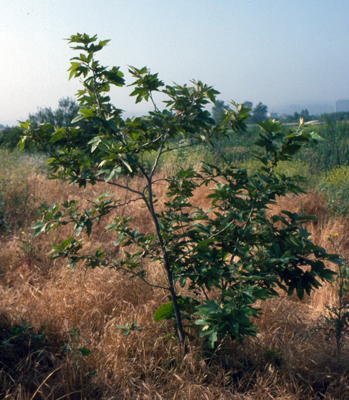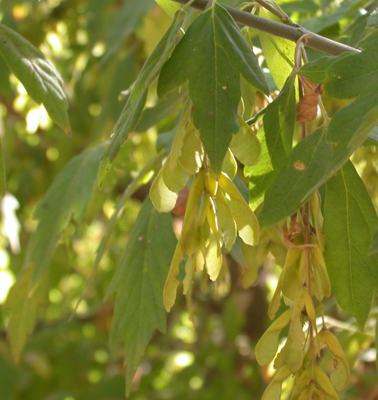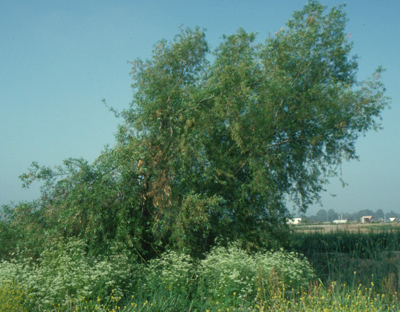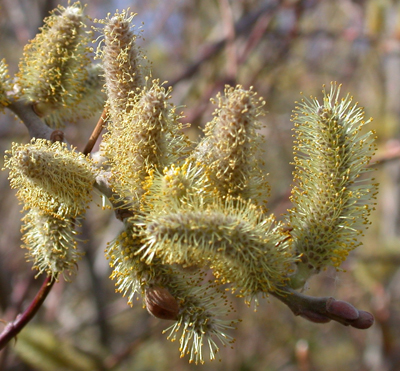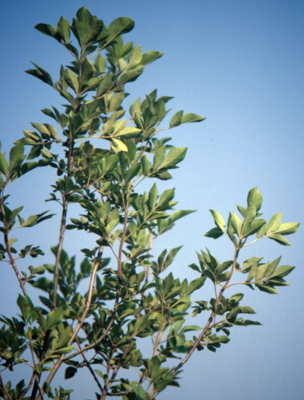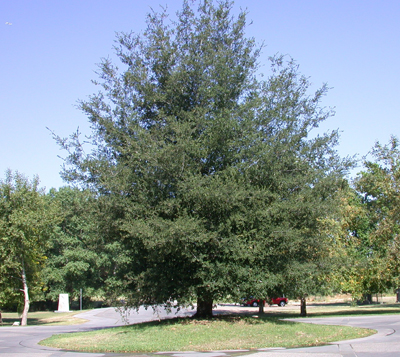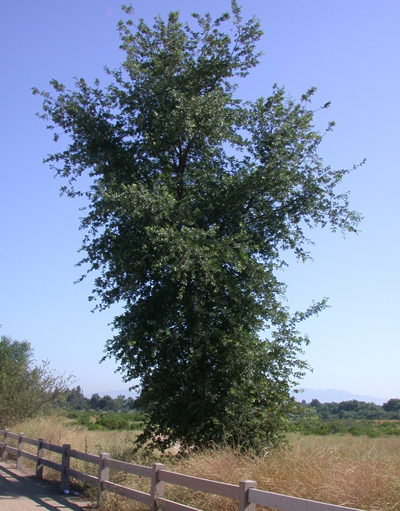|
|||||||||||||
COMMON NATIVE TREES IN THE SEPULVEDA BASIN WILDLIFE RESERVE |
|||||||||||||
Fremont cottonwood (Populus fremontii) - Willow Family |
||
Cottonwood trees can grow about 80 feet tall, and are common along rivers in hot areas like inland valleys and the desert. Native Americans and early settlers used the wood for building. The bark and leaves were used as medicine. During times of famine the bark was eaten as food. The leaves are yellow green on top, and very light green on the underside. Most of the cottonwood trees in the Reserve are males, but a few female trees are now mature enough to go to seed and disperse the “cotton” fluffy seeds in the spring. Another species of cottonwood tree – black cottonwood (Populus balsamifera ssp. trichocarpa) – has also been planted out in the Reserve. It can be distinguished from Fremont cottonwood by its leatherier leaves with a dull underside. The leaves turn yellow in late autumn and then drop in early winter, providing a blaze of native fall color. CLICK HERE TO SEE SHORT VIDEO ABOUT THE COTTONWOOD APHID GALL |
||
Southern California black walnut (Juglans californica var. californica) - Walnut Family |
||
The California walnut is an uncommon tree in southern California, but it can be found locally in the Santa Susana and Santa Monica Mountains, especially on north slopes. The tree generally grows to less than 50 feet tall. The trees usually have multiple trunks. The walnuts have a green hull, with a black nut (but taste like English walnuts). This tree is a volunteer in the Wildlife Reserve and grows from nuts that wash down from the surrounding hills. Walnut trees are deciduous and the leaves turn yellow in autumn. |
||
Western sycamore (Platanus racemosa) - Sycamore Family |
||
The western sycamore can grow more than 100 feet tall, and are common along streams. Sycamore wood is very tough and strong. Native Americans and settlers made bowls of sycamore wood and used the wood to build houses. The leaves are light green to green, the undersides of the leaves are furry, and the bark on mature trees is whitish. The London plane tree is a common park and street tree that looks very similar to the native sycamore, but it has darker bark; the trees that tower over the amphitheater / boulder area at the entrance to the Wildlife Reserve are London plane trees. |
||
Box elder (Acer negundo var. californicum) - Maple Family |
||
Box elder is a medium-size tree, from 20 to 65 feet tall. It has pinnately compound leaves, with 3-5 leaflets. It is common to streamsides and bottomlands, and has been widely planted as an ornamental or street tree. It can be found along the trails in both the North and South Reserves. |
||
Willows (Salix spp.) - Willow Family |
||
There are three willow trees that have been identified in the Wildlife Reserve. These are Arroyo willow (Salix lasiolepis), red willow (Salix laevigata) and sandbar willow (Salix exigua). These trees seldom grow more than 32 feet tall. Indians made rope from the inner bark of the arroyo willow in springtime. Willows bloom with catkins in the late winter. |
||
Velvet ash (Fraxinus velutina) - Olive Family |
||
Velvet ash trees are on the small side, usually less than 30 feet tall, and are found along streams or washes. The leaves of these trees turn yellow in the fall and then drop off. Another non-native ash tree – evergreen ash (Fraxinus uhdei) – is an aggressive invader of riparian areas in the Reserve. Even though the leaves are pinnate like the velvet ash, evergreen ash has more leaflets and does not lose its leaves in the winter. |
||
Coast live oak (Quercus agrifolia) - Oak Family |
||
The coast live oak is a common tree to the vicinity of the Sepulveda Basin. The town of Encino – “encinal” means oak woodland in Spanish – takes its name for the dominant tree in the hills on the south side of the San Fernando Valley. These oaks grow to 80 feet tall and are evergreen. The acorn was a staple food for the Chumash people, who ground up the acorns, leached out the bitter taste, and cooked it into mush. These oak trees also provide food and shelter for the native fauna. |
||
Valley oak (Quercus lobata) - Oak Family |
||
While the main distribution of valley oaks stops near the San Fernando Valley, they are considered a likely a component of the flora in riparian areas. Valley oaks have been planted in both the North and South Reserves. Valley oaks can be larger than coast live oaks, up to 100 feet tall. But they are different than coast live oaks in that they lose their leaves in the winter. |
||



